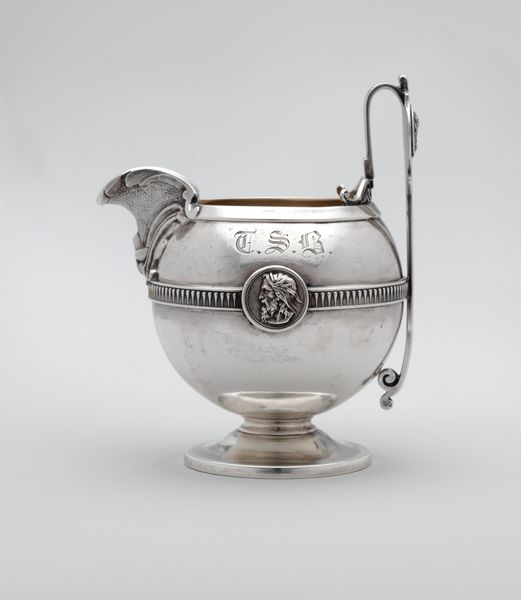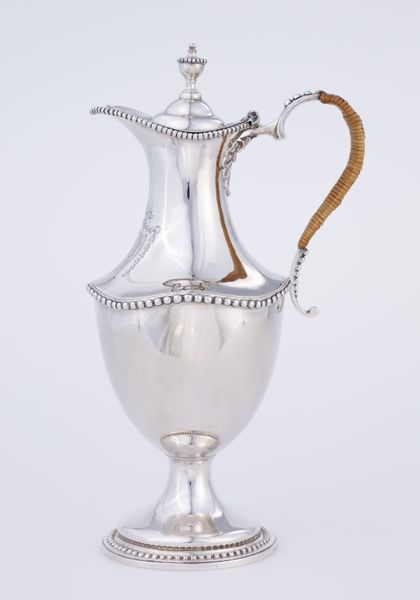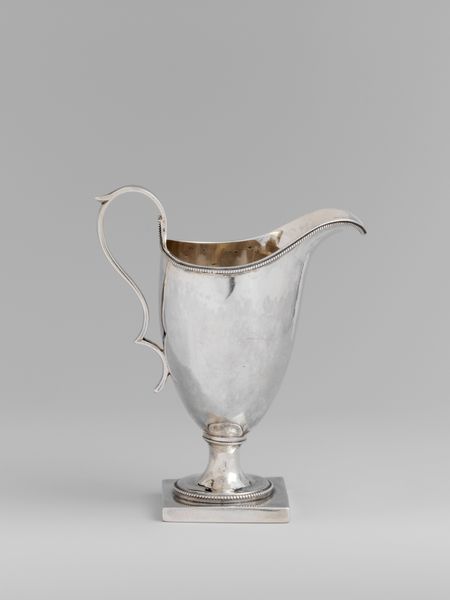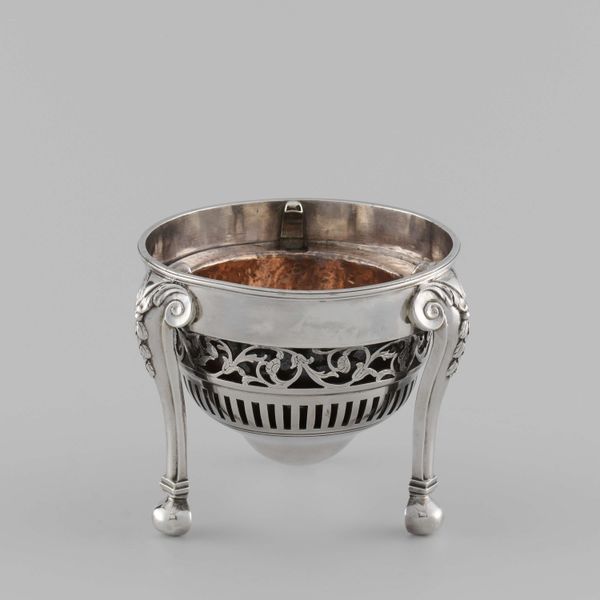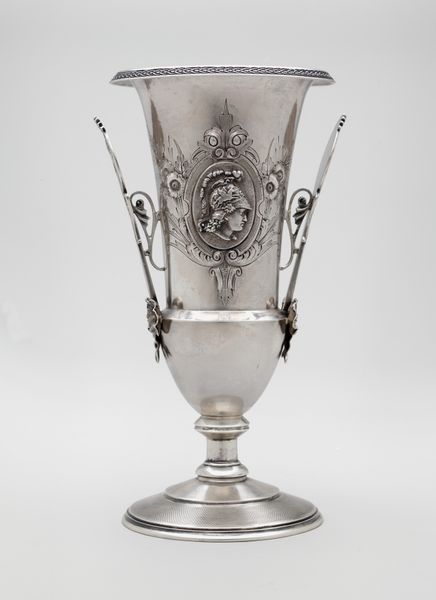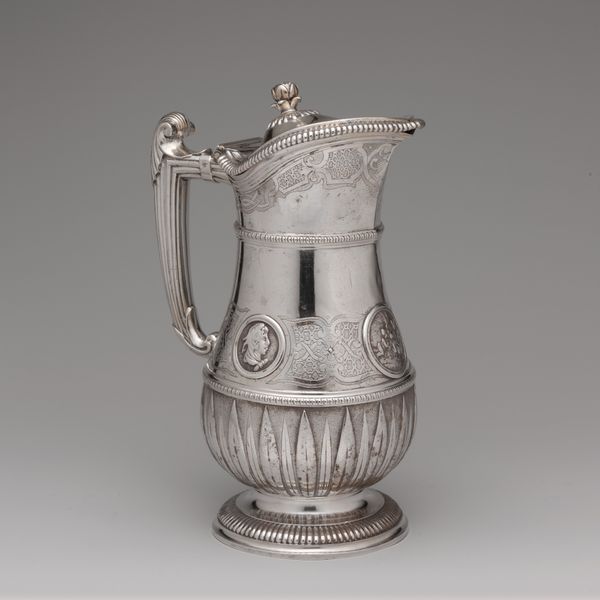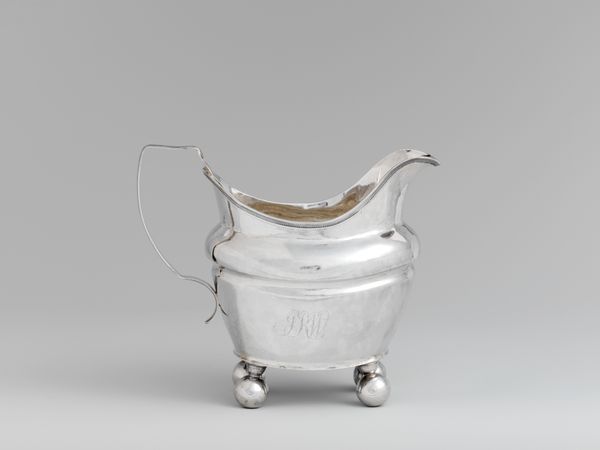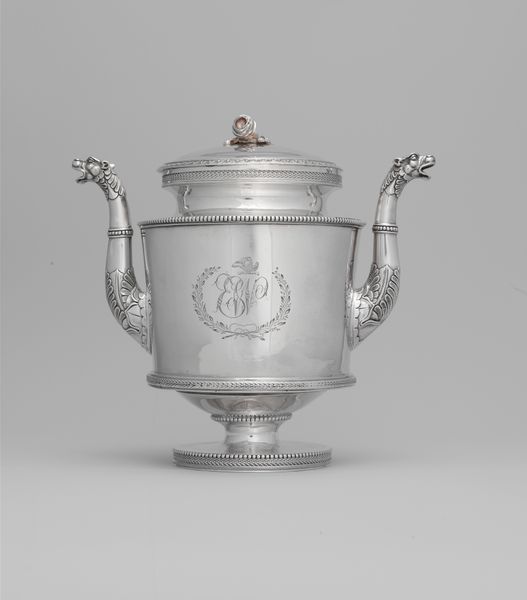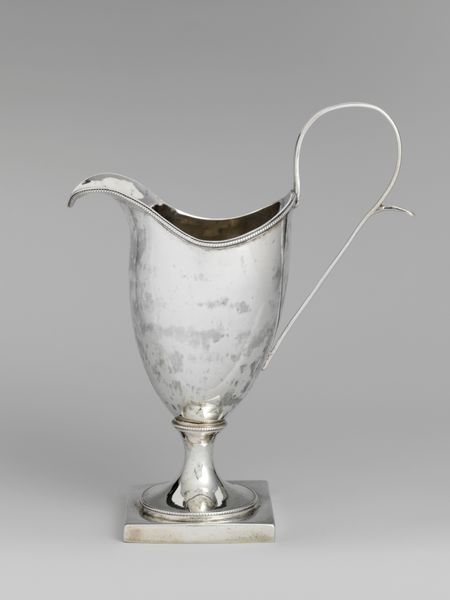
silver, metal, sculpture
#
silver
#
metal
#
greek-and-roman-art
#
classicism
#
sculpture
#
decorative-art
Dimensions: 4 3/4 × 4 1/8 × 4 in., 7.668 Troy Ounces (12.1 × 10.5 × 10.2 cm, 238.5g)
Copyright: Public Domain
Curator: Here we have an elegant "Sugar Bowl" crafted by the Gorham Manufacturing Company sometime between 1860 and 1870. It's a silver sculpture, currently residing at the Metropolitan Museum of Art. Editor: Its classical coolness hits me immediately—stately and reserved, as if sugar itself were a precious secret entrusted only to the initiated. Curator: Absolutely. Notice how Gorham blends decorative art with classical Greek and Roman motifs. The profiles on the medallions, for example—do you recognize any specific figures? Editor: Well, they certainly evoke images of Roman emperors or perhaps idealized depictions of figures from antiquity. That period really embraced those historical references. The repeated use of those forms feels deliberate, almost like a visual echo of power and status. Curator: Exactly! The object's creation coincides with a period that idealized classical aesthetics. The silver medium elevates it, but these are also objects of domestic use. Does this juxtaposition say anything to you? Editor: That is interesting. In that era, even your sugar bowl announced your adherence to cultural values, proclaiming prosperity, taste and a solid education in the classics, of course. It's as if powdered sugar came with a side of aspiration. Curator: Indeed. And consider the form—perfect symmetry and a very precise line. Editor: That balance speaks volumes—a desire for order, control, perhaps even a longing for the perceived stability of past empires during a time of change. But personally I am fond of how the handles contrast so well with this stability by displaying playful freedom in form. It gives me the impression that stability doesn't necessarily mean boredom. Curator: Well said. This piece truly captures the artistic dialogue of its time, where classical ideals met the functional beauty of decorative art. It offers not only sugar but also a lens into the aspirations of a bygone era. Editor: It really shows the profound symbolism in seemingly simple domestic items. It is amazing how our everyday objects mirror us!
Comments
No comments
Be the first to comment and join the conversation on the ultimate creative platform.
